*NURSING > CASE STUDY > NR-508 Week 2 Case Study Discussion: Contraceptive: Claudia 36 Year (Original Post & Responses) (All)
NR-508 Week 2 Case Study Discussion: Contraceptive: Claudia 36 Year (Original Post & Responses)
Document Content and Description Below
NR-508 Week 2 Case Study Discussion: Contraceptive: Claudia 36 Year (Original Post & Responses) Claudia is a 36-year-old mother of two G2P2, she recently delivered her last child 9 months ago, an... d has been using condoms for birth control for the last 7 months. Today she is requesting a more reliable birth control, she is not sure of her current pregnancy plans, however, she does not wish to discuss sterilization. No religious contraindications for treatment. Previous methods include condoms, and oral contraceptive pills. She thought about an IUD but is concerned her husband may feel it during intimacy. PMH: positive for mild hypertension with first pregnancy, seasonal allergies. Surgeries: Left inguinal hernia and tonsillectomy. Family history: Mother HTN and Father colon CA both deceased Social History: Denies tobacco use, wine one to two glasses a week, denies recreational drugs, exercises twice a week. Drug allergies-Sulfa causes a rash. Current medications-MVI with Fe, Calcium chews, prn Allegra for allergies. Height 67 inches, weight 157 pounds, BP 110/75, P 70, R 16. PAP collected today, breast exam WNL, urine pregnancy negative. Physical exam is normal. ● What are your treatment goals for Claudia today? ● What are two possible contraceptive methods for Claudia? Please give brief rationale for each. ● Pick one method and list five (5) patient-centered teaching points for the method you chose today. ● What would your contraceptive choice be if Claudia smoked 10-15 cigarettes per day? Explain your answer. Dr. McMahon and class, From this particular case study, Claudia is a healthy 36 year-old mother with a non-extensive past medical history. When choosing a method of contraception, considerations must be addressed, such as the patient’s age, ability of compliance, cost, and the health and medical conditions of the patient. The main treatment goal for Claudia is to provide suitable birth control methods that address all the aforementioned considerations. We also want to make sure the methods are convenient and affordable for Claudia to achieve her treatment goals. While Claudia is unsure about her future pregnancy plans, my goal is to provide a reliable option that is also the safest and most effective method. Education on the various birth control options, as well as side effects will also be discussed. Claudia should also understand that all contraceptive options will not prevent the transmission of sexually transmitted diseases (STD). Two possible contraceptive methods for Claudia: Given Claudia’s healthy medical profile, two of the most suitable contraceptive methods include oral contraceptives and injections. These methods include progestin-only preparations and preparations that include various combinations of estrogen and progestin (Woo & Robinson, 2016). When taken appropriately, all types of oral contraceptives have similar effectiveness. Both methods offer the highest rates of efficacy. With oral contraceptives, there are various dosing regimens and start methods. They also have a host of benefits, including fewer ovarian cysts, acne reduction, decreased dysmenorrhea and menstrual irregularities, and significant reduction in endometrial and ovarian cancer risk (Grindlay & Grossman, 2016). Some examples of oral contraceptives include Yazmin, MonoNessa, Seasonique, Lybrel, and Ortho Tri-Sprintec. While there are some side effects to consider when taking oral contraceptives, such as nausea, breast tenderness, weight gain, and intermenstrual spotting, oral contraceptives are reversible if Claudia would like the opportunity to become pregnant again in the future. Another suitable contraceptive method are injectable progestins. Depo-Provera is a long-acting, injectable contraceptive with a 99% effective rate that lasts up three months. It thickens the cervical mucus and atrophies the endometrium (Woo & Robinson, 2016). Many women prefer injections because it is more convenient to receive injections once every three months. Side effects of Depo-Provera include altered bleeding pattern, weight gain, breast tenderness, and increased bone density with prolonged use. If Claudia plans to become pregnant in the future, it may take up to ten months after stopping injections to conceive. Five Patient Centered Teaching Points for Injectable Progestins There are various teaching points for patients who would like to use injections as a birth control method. 1) Before initiating Depo-Provera, the healthcare provider should make sure the patient is not currently pregnant. It can be started while the patient is menstruating, or if the patient has had two negative urine pregnancy tests spaced two weeks apart (Spevack, 2013). The patient must understand that the intramuscular injection cannot be reversed after administration. Once the patient is on an injectable regimen, discontinuation of the injections can delay return of fertility up to ten to eighteen months (Spevack, 2013). 2) The patient should be instructed on the effectiveness of the drug. One injection is effective at suppressing ovulation and preventing pregnancy for twelve weeks. Therefore, the injection is only given once every three months. It is imperative that patients return to receive dosing once every three months to achieve reliable efficacy (Spevack, 2013). If they miss a dose within the prescribed time, a repeat dose up to one week late can still prevent pregnancy. It is advisable for patients to use another form of birth control until they receive their next shot. This type of regimen is advantageous for patients who are looking for convenience, and it is 99% effective at preventing pregnancy. 3) Patients must be educated on the common side effects of injectable progestins. Common side effects include weight gain, irregular menstruation, headaches, fatigue, bloating, and anxiety (Spevack, 2013). For the first year, patients may experience spotting more than usual between periods. If any of these side effects become bothersome for the patients, encourage patients to discuss issues with the healthcare provider. 4) If Claudia is currently breastfeeding, it is important to mention that Depo-Provera has no harmful effects for lactating mothers (Spevack, 2013). It is also important to educate Claudia that injections will not prevent sexually transmitted diseases. If used correctly, condoms can help protect against STDs. 5) Lastly, Claudia should be educated on the FDA’s Black-Box Warning for long-time use of Depo-Provera. Long-term use of Depo-Provera is associated with a decrease in bone density (Spevack, 2013). Most often, the bone thickness can increase after stopping Depo-Provera. If Claudia decides to use Depo-Provera for more than two years, bone density assessment should be implemented. She should be instructed to increase calcium intake and refrain from smoking in order to reduce bone loss. This can be a serious concern for female adolescents and those who have not attained peak bone mass (Woo & Robinson, 2016). Contraceptive Choice if Claudia smoked 10-15 cigarettes a day: Orally administered estrogens increase the risk of blood clots because the hormone can contribute to changes in coagulation due to first pass metabolism (Woo & Robinson, 2016). Therefore, smokers who use estrogen-containing contraceptives are at an increased risk for blood clots, coronary artery disease, and stroke (Grindlay & Grossman, 2016). The risk also increases with age and in women with cardiovascular risk factors of hypertension, diabetes, and hyperlipidemia. With no baseline cardiovascular risk, Claudia can still take a low-dose estrogen contraceptive with small caution if she smokes 10-15 cigarettes a day. If she was an even heavier smoker, estrogen contraceptives would not be advised. Since progesterone does not increase the risk of blood clots, alternative contraceptive choices include progestin implants, progestin injections, or intrauterine devices. However, smoking cessation should highly be advised due to its risk of coronary artery disease, strokes, asthma, and lung cancer. References Grindlay, L., & Grossman, D. (2016). Prescription birth control access among U.S. women at risk of unintended pregnancy. Journal of Women’s Health, 25(3), 249-254. doi:10.1089/jwh.2015.5312 Spevack, E. (2013). The long-term health implications of Depo-Provera. Integrative Medicine: A Clinician’s Journal, 12(1), 27-34. Woo, T & Robinson, M. (2016). Pharmacotherapeutics for the advanced practice nurse prescribers. (4th ed.) Philadelphia, PA: F. A. Davis Company Summary: This week, we discussed medications prescribed for reproductive problems in both men and women, as well as medications prescribed in contraception and gynecology. Pharmacokinetics and pharmacotherapeutics for medications were studied, including adverse drug reactions and drug interactions. In addition to the health-care needs of the patients, monitoring hormone levels, liver function tests, and complete blood count evaluation are essential with supplemental and replacement hormonal therapy. Information on various birth control options was heavily discussed in this week’s post. When choosing a method of contraception, considerations must be addressed, such as the patient’s age, ability of compliance, cost, and the health and medical conditions of the patient. Lastly, when treating patients with sexually transmitted diseases, extensive education is often needed, including overall treatment plan, side effects of medication, and addressing adherence issues. [Show More]
Last updated: 1 year ago
Preview 1 out of 5 pages
.png)
Also available in bundle (1)

NR 508 DISCUSSION TOPIC WEEK 1, CASE STUDY DISCUSSION WEEK 2, 3, 5 BUNDLE | 100% VERIFIED.
NR 508 DISCUSSION TOPIC WEEK 1, CASE STUDY DISCUSSION WEEK 2, 3, 5 BUNDLE | 100% VERIFIED.
By A+ Solutions 2 years ago
$14.5
4
Reviews( 0 )
Document information
Connected school, study & course
About the document
Uploaded On
Nov 11, 2021
Number of pages
5
Written in
Additional information
This document has been written for:
Uploaded
Nov 11, 2021
Downloads
0
Views
45



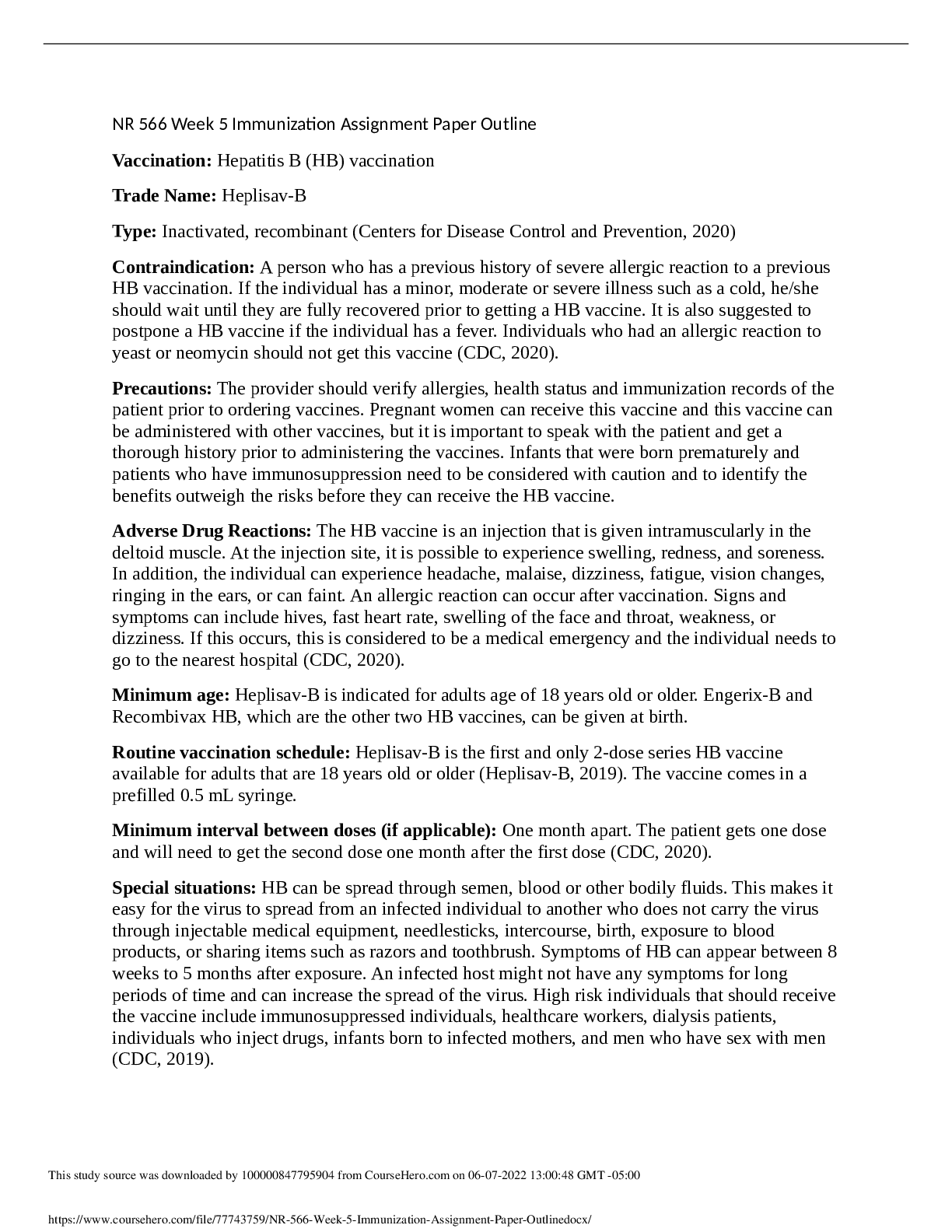









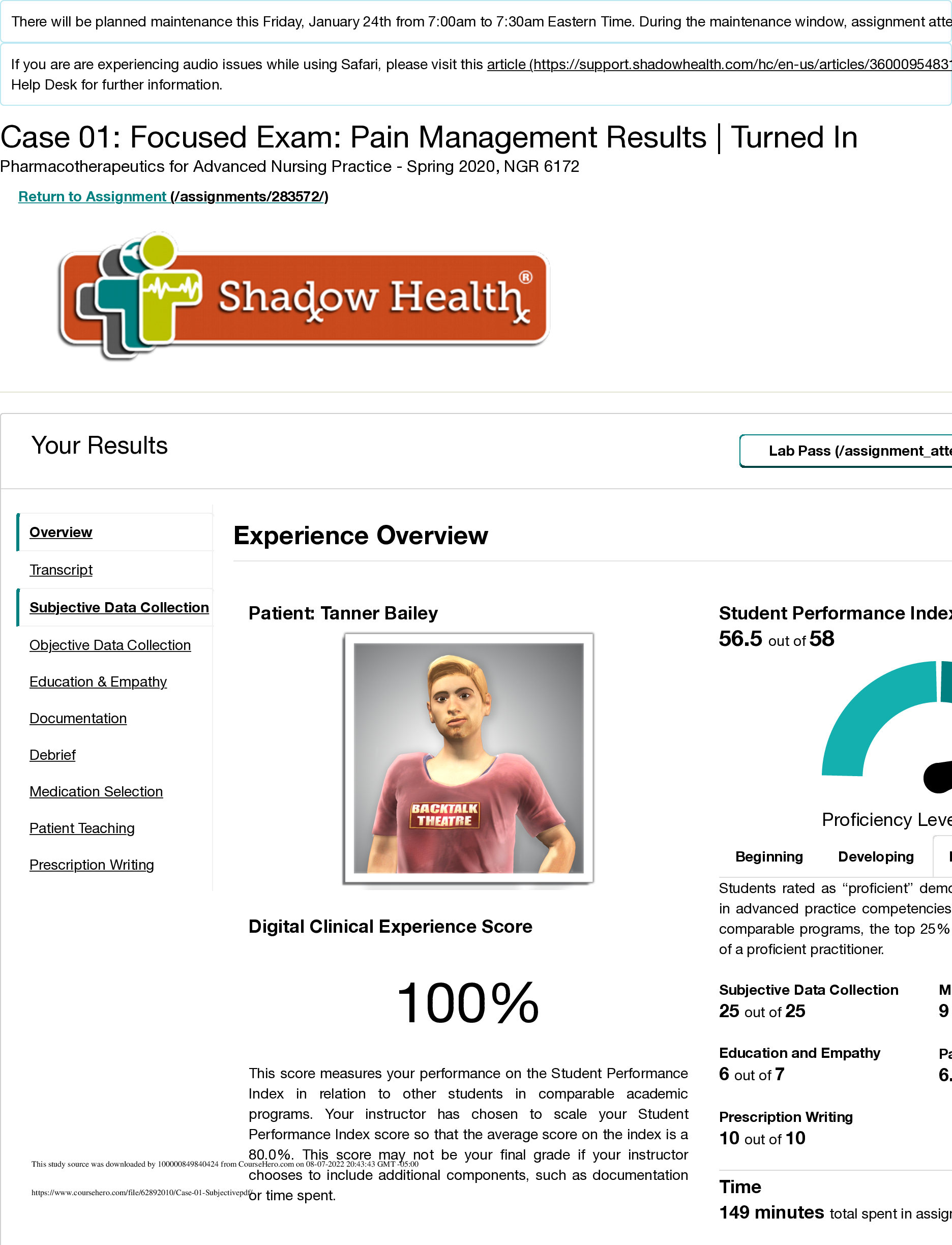
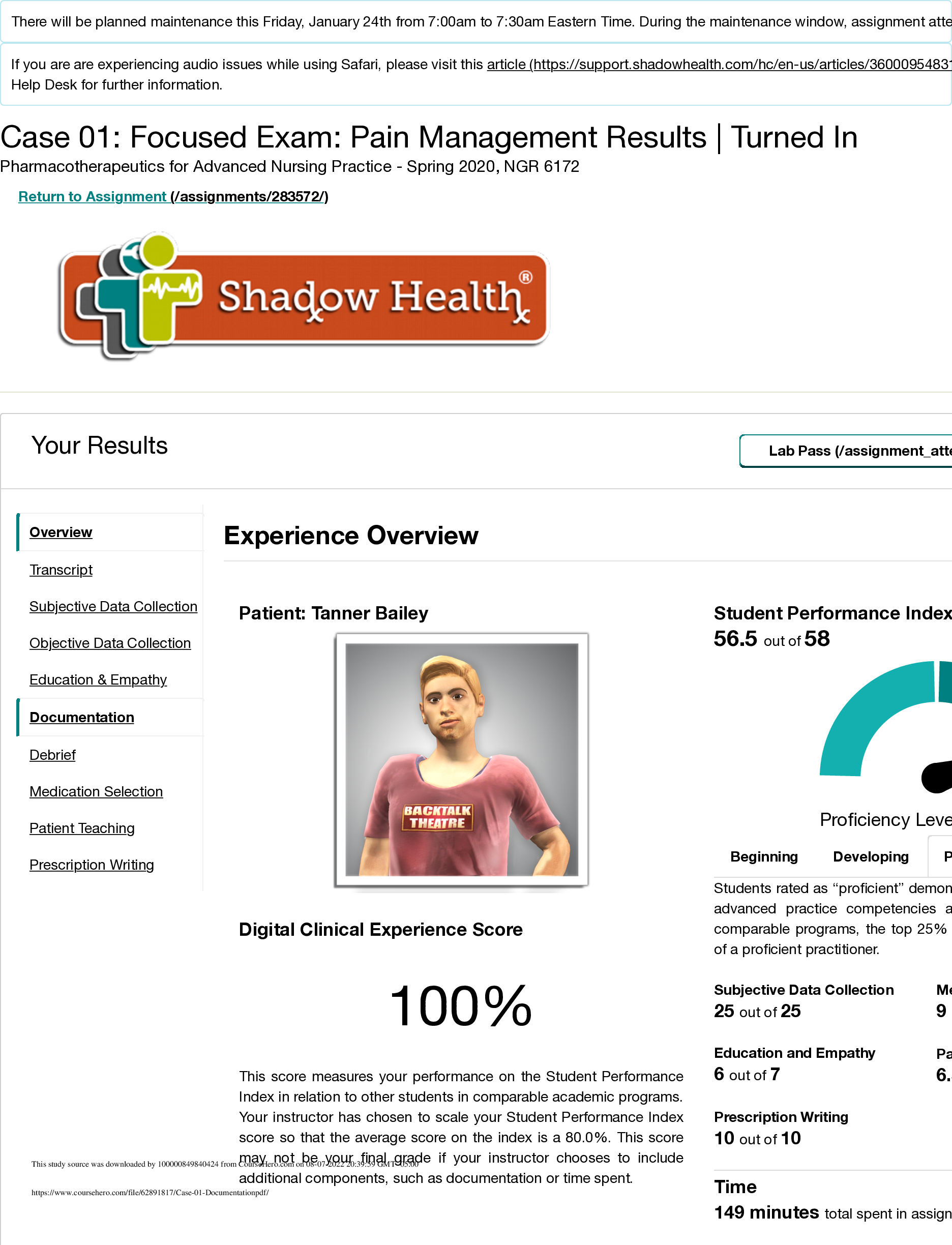




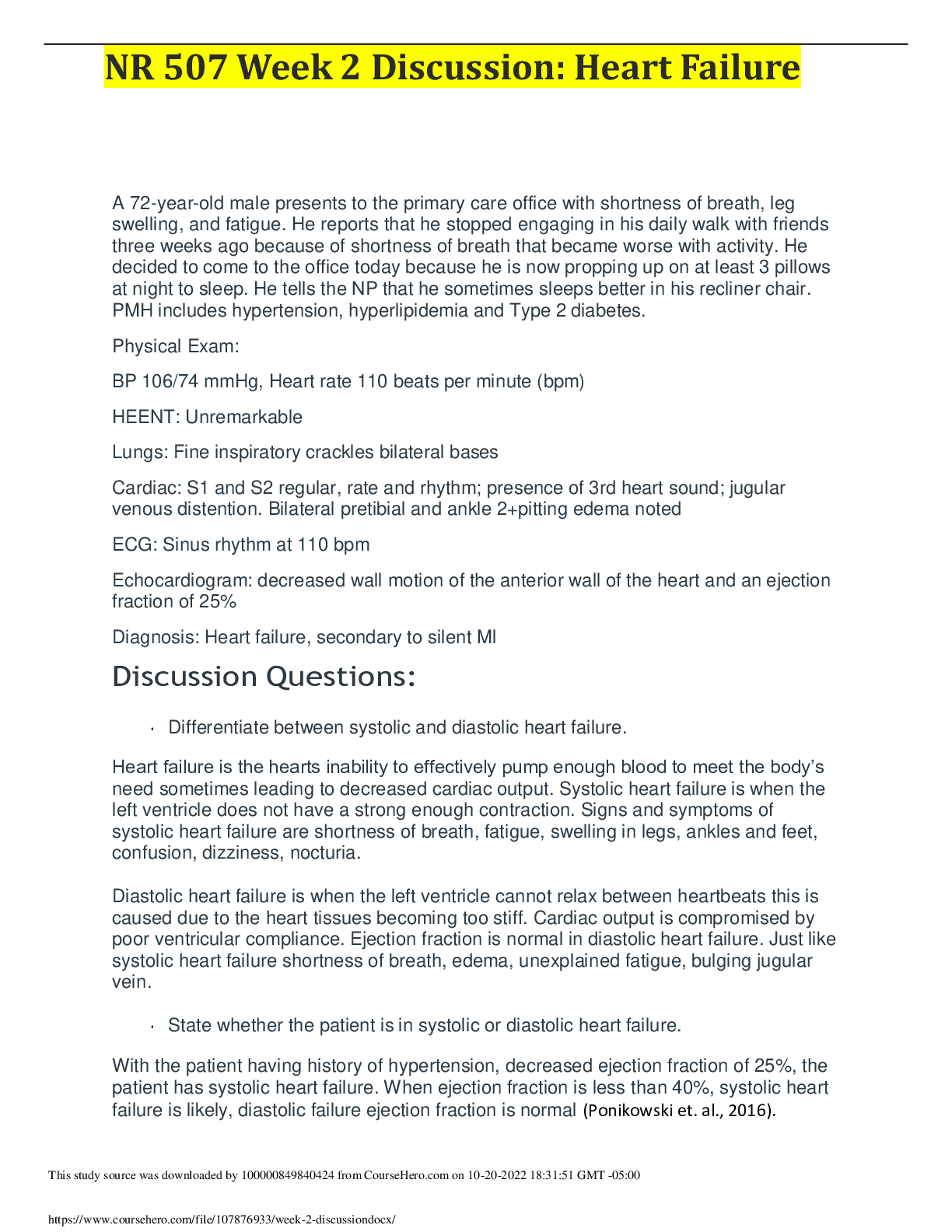
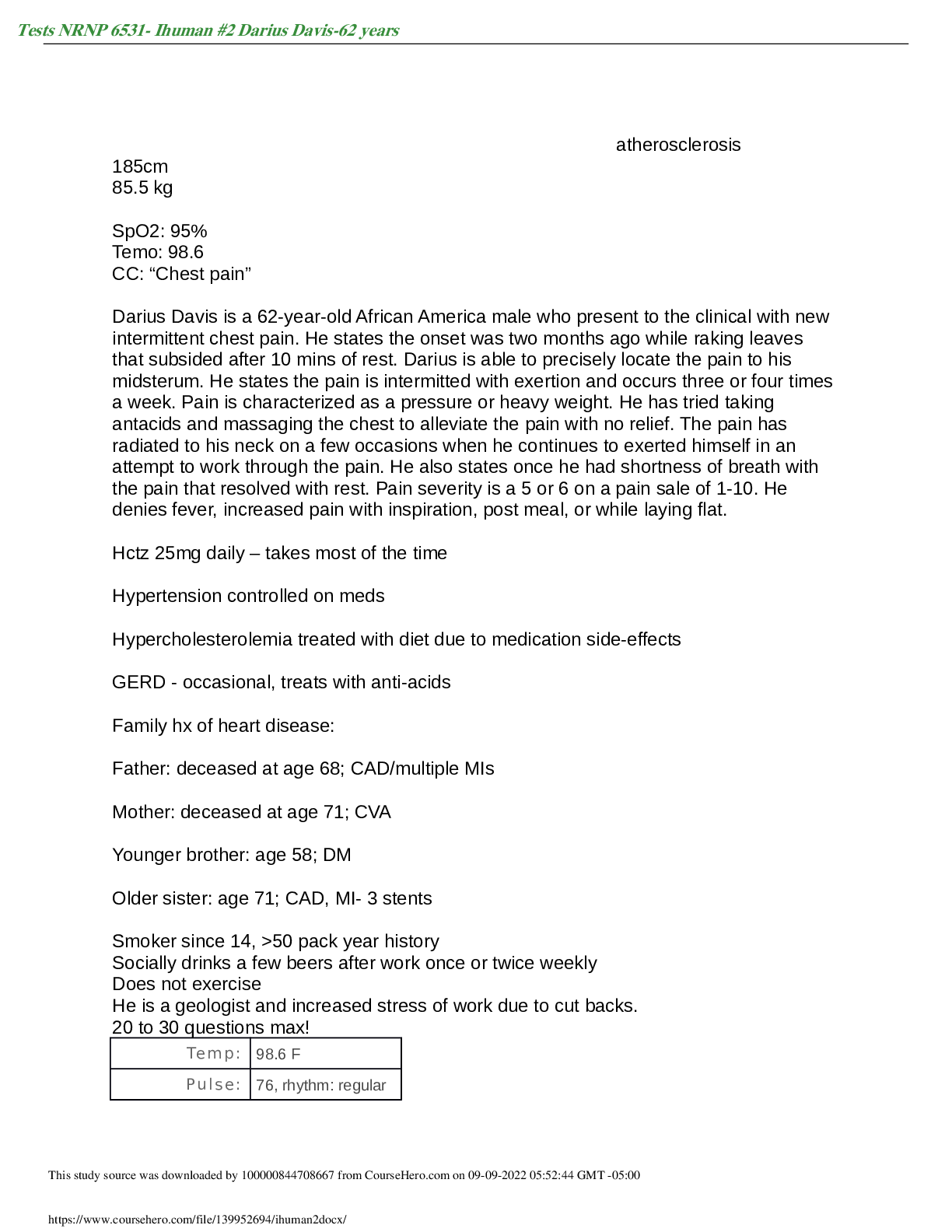



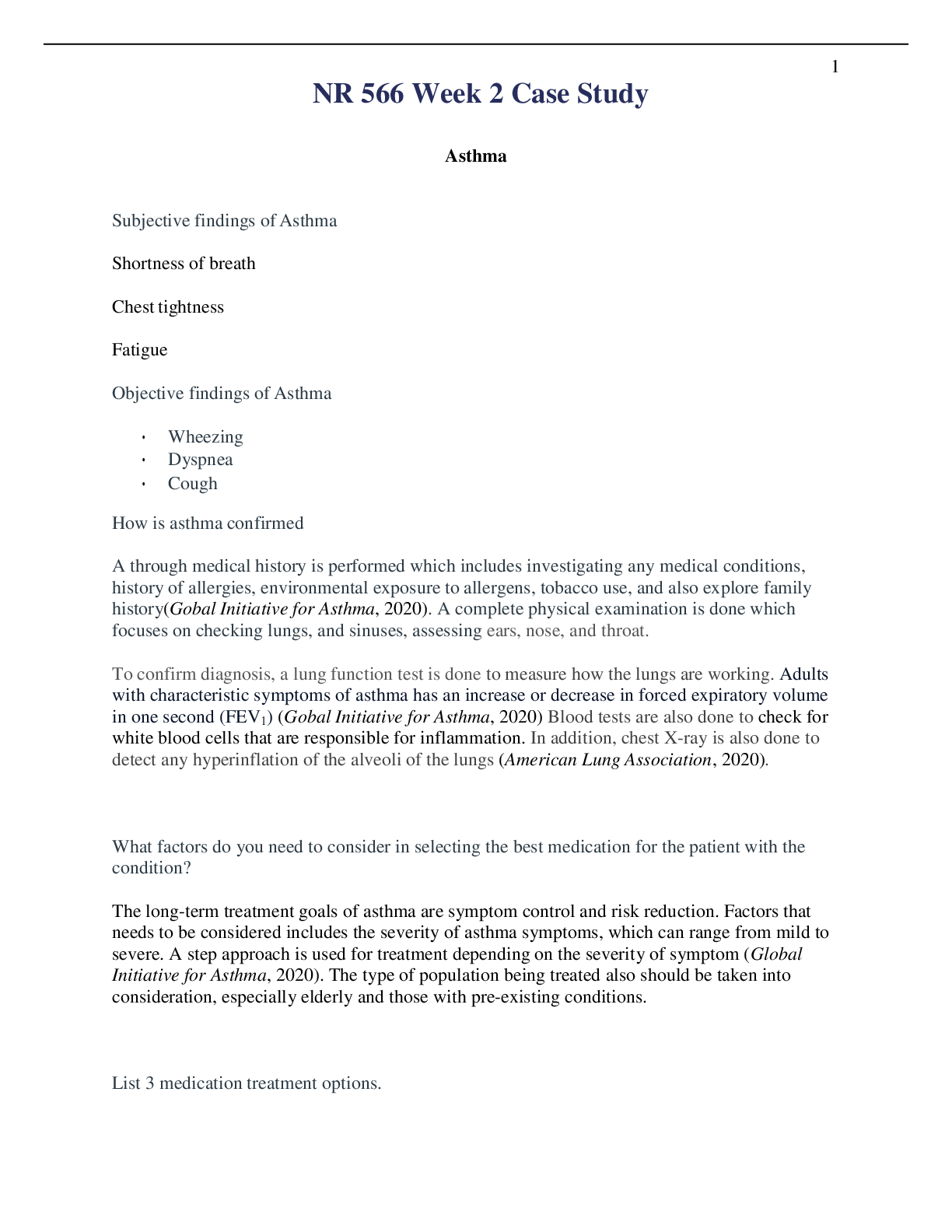


.png)






